Well, we are trying to analyze the following circuit:

simulate this circuit – Schematic created using CircuitLab
When we use and apply KCL, we can write the following set of equations:
$$
\begin{cases}
\begin{alignat*}{1}
\text{I}_2&=\text{I}_1+\text{I}_4\\
\\
0&=\text{I}_0+\text{I}_1+\text{I}_5\\
\\
0&=\text{I}_0+\text{I}_2+\text{I}_3\\
\\
\text{I}_5&=\text{I}_3+\text{I}_4
\end{alignat*}
\end{cases}\tag1
$$
When we use and apply Ohm's law, we can write the following set of equations:
$$
\begin{cases}
\begin{alignat*}{1}
\text{I}_1&=\frac{\displaystyle\text{V}_\text{a}-\text{V}_1}{\displaystyle\text{R}_1}\\
\\
\text{I}_2&=\frac{\displaystyle\text{V}_1-0}{\displaystyle\text{R}_2}\\
\\
\text{I}_3&=\frac{\displaystyle\text{V}_3-0}{\displaystyle\text{R}_3}\\
\\
\text{I}_4&=\frac{\displaystyle\text{V}_2-\text{V}_1}{\displaystyle\text{R}_4}\\
\\
\text{I}_5&=\frac{\displaystyle0-\text{V}_3}{\displaystyle\text{R}_5}
\end{alignat*}
\end{cases}\tag2
$$
We also know that \$\displaystyle\text{V}_2-\text{V}_3=\text{V}_\text{b}\$.
Using \$(2)\$ we can rewrite \$(1)\$ as follows:
$$
\begin{cases}
\begin{alignat*}{1}
\frac{\displaystyle\text{V}_1-0}{\displaystyle\text{R}_2}&=\frac{\displaystyle\text{V}_\text{a}-\text{V}_1}{\displaystyle\text{R}_1}+\frac{\displaystyle\text{V}_2-\text{V}_1}{\displaystyle\text{R}_4}\\
\\
0&=\text{I}_0+\frac{\displaystyle\text{V}_\text{a}-\text{V}_1}{\displaystyle\text{R}_1}+\frac{\displaystyle0-\text{V}_3}{\displaystyle\text{R}_5}\\
\\
0&=\text{I}_0+\frac{\displaystyle\text{V}_1-0}{\displaystyle\text{R}_2}+\frac{\displaystyle\text{V}_3-0}{\displaystyle\text{R}_3}\\
\\
\frac{\displaystyle0-\text{V}_3}{\displaystyle\text{R}_5}&=\frac{\displaystyle\text{V}_3-0}{\displaystyle\text{R}_3}+\frac{\displaystyle\text{V}_2-\text{V}_1}{\displaystyle\text{R}_4}
\end{alignat*}
\end{cases}\tag3
$$
Solving this for your circuit we get:
In[1]:=Clear["Global`*"];
Va = 10;
Vb = 20;
R1 = 5;
R2 = 2;
R3 = 4;
R4 = 3;
R5 = 2;
FullSimplify[
Solve[{I2 == I1 + I4, 0 == I0 + I1 + I5, 0 == I0 + I2 + I3,
I5 == I3 + I4, I1 == (Va - V1)/R1, I2 == (V1 - 0)/R2,
I3 == (V3 - 0)/R3, I4 == (V2 - V1)/R4, I5 == (0 - V3)/R5,
V2 - V3 == Vb}, {I0, I1, I2, I3, I4, I5, V1, V2, V3}]]
Out[1]={{I0 -> -(310/121), I1 -> 70/121, I2 -> 430/121, I3 -> -(120/121),
I4 -> 360/121, I5 -> 240/121, V1 -> 860/121, V2 -> 1940/121,
V3 -> -(480/121)}}
In[2]:=N[%]
Out[2]={{I0 -> -2.56198, I1 -> 0.578512, I2 -> 3.55372, I3 -> -0.991736,
I4 -> 2.97521, I5 -> 1.98347, V1 -> 7.10744, V2 -> 16.0331,
V3 -> -3.96694}}


